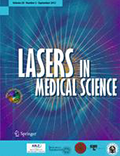
Effects of photodynamic laser and violet-blue led irradiation on Staphylococcus aureus biofilm and Escherichia coli lipopolysaccharide attached to moderately rough titanium surface: in vitro study.
Lasers Med Sci. 2017 Mar 10.
doi: 10.1007/s10103-017-2185-y.
[Epub ahead of print]
Authors: Giannelli M1, Landini G2, Materassi F3, Chellini F4, Antonelli A2,5, Tani A4, Nosi D4, Zecchi-Orlandini S4, Rossolini GM2,5,6, Bani D4.
1. Odontostomatologic Laser Therapy Center Florence Italy
2. Department of Medical Biotechnologies, Santa Maria alle Scotte University Hospital University of SienaSienaItaly
3. Department of Experimental and Clinical Medicine—Section of Anatomy and Histology, Largo Brambilla 3University of FlorenceFlorence Italy
4. Department of Experimental and Clinical Medicine, Section of Critical Care and Specialistic MedicineUniversity of FlorenceFlorence Italy
5. Clinical Microbiology and Virology UnitFlorence Careggi University Hospital FlorenceItaly
Abstract: Effective decontamination of biofilm and bacterial toxins from the surface of dental implants is a yet unresolved issue. This study investigates the in vitro efficacy of photodynamic treatment (PDT) with methylene blue (MB) photoactivated with λ 635 nm diode laser and of λ 405 nm violet-blue LED phototreatment for the reduction of bacterial biofilm and lipopolysaccharide (LPS) adherent to titanium surface mimicking the bone-implant interface. Staphylococcus aureus biofilm grown on titanium discs with a moderately rough surface was subjected to either PDT (0.1% MB and λ 635 nm diode laser) or λ 405 nm LED phototreatment for 1 and 5 min. Bactericidal effect was evaluated by vital staining and residual colony-forming unit count. Biofilm and titanium surface morphology were analyzed by scanning electron microscopy (SEM). In parallel experiments, discs coated with Escherichia coli LPS were treated as above before seeding with RAW 264.7 macrophages to quantify LPS-driven inflammatory cell activation by measuring the enhanced generation of nitric oxide (NO). Both PDT and LED phototreatment induced a statistically significant (p < 0.05 or higher) reduction of viable bacteria, up to -99 and -98% (5 min), respectively. Moreover, besides bactericidal effect, PDT and LED phototreatment also inhibited LPS bioactivity, assayed as nitrite formation, up to -42%, thereby blunting host inflammatory response. Non-invasive phototherapy emerges as an attractive alternative in the treatment of peri-implantitis to reduce bacteria and LPS adherent to titanium implant surface without causing damage of surface microstructure. Its efficacy in the clinical setting remains to be investigated.
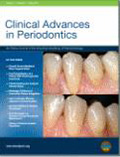
Management of Severe Periodontal Abscesses Using Laser/light-Emitting Diode (LED) Procedure Adjunctive to Scaling & Root Planing. A Case-Series Study
Authors: Marco Giannelli MD*, Fabrizio Materassi DD*, Luca Lorenzini MD*, Daniele Bani MD†
*Odontostomatologic Laser Therapy Center, via dell’Olivuzzo 162/164, I-50143 Florence, Italy.
†Department of Experimental & Clinical Medicine, Research Unit of Histology & Embryology, University of Florence, viale G.Pieraccini 6, I-50139 Florence, Italy.
Address correspondence to: Dr. Marco Giannelli Odontostomatologic Laser Therapy Center via dell’Olivuzzo 162/164, 50143 Florence, Italy Phone/fax: +39 055 701665; dott.giannellimarco@gmail.com
Introduction: The current literature reports different treatment procedures for periodontal abscesses mainly based on empiricism, but an evidence-based treatment of choice is still lacking. This case report series shows the favorable results of a multi-laser/light-emitting diode (LED) treatment, termed photoablative-photodynamic (PAPD) laser/LED therapy, adjunctive to scaling and root planing (SRP) for the management of acute periodontal abscesses.
Case series: Six patients underwent: 1) photoablation of the contaminated gingival epithelium by diode laser (λ 810 nm), 2) irradiation with a λ 405 nm LED, 3) SRP, 4) repeated photodynamic treatments with 0.3% methylene blue activated with a λ 635 nm diode laser to achieve antiseptic and anti-inflammatory effects. Clinical examination and cytofluorescent analysis were used to evaluate the effects of this combined treatment. Subjective pain/discomfort was scored by a visual analog scale and questionnaire.
Conclusion: Within the limitations of this case series, the present results indicate that the described PAPD laser/LED treatment performed in adjunct to conventional SRP can be a valuable approach to the treatment of acute periodontal abscesses because it is capable of accelerating periodontal healing while avoiding the use of local or systemic antibiotics and flap surgery.

Clinical Advances in Periodontics
Posted online on December 17, 2016.
(doi:10.1902/cap.2016.160070)
Laser/light-emitting Diode(LED)-assisted Immediate Placement of Ultrashort Implants in an Infected Site With Severe Loss of Soft Tissues and Bone: Case Report With 3-year Follow-up
Authors: Marco Giannelli MD*, Fabrizio Materassi MD*, Daniele Bani MD†
*Odontostomatologic Laser Therapy Center, Via dell’ Olivuzzo 162, 50143, Florence, Italy.
†Department of Experimental and Clinical Medicine, Research Unit of Histology & Embryology, viale G.Pieraccini 6, University of Florence, 50134 Florence, Italy.
Address correspondence to: Dr. Marco Giannelli, MD Odontostomatologic Laser Therapy Center Via dell’ Olivuzzo 162, 50143 Florence, Italy dott.giannellimarco@gmail.com
Background: Alveolar bone resorption, an ineluctable consequence of tooth extraction in infected sites, can substantially jeopardize the outcome of dental implant placement. This report describes a new therapeutic approach in a patient with severe, destructive dental-periodontal infection based on the use of multiple laser and light-emitting diode (LED) sources for decontamination, anti-inflammation and stimulation of repair/regeneration of soft and hard tissues and simultaneous implantation of ultra-short implants and biomaterials.
Case presentation: a 55-year-old Caucasian male with a history of chronic periodontitis presented with destructive dental-periodontal infection and extended loss of alveolar bone, requiring removal of tooth #11. He underwent irradiation with diode (λ 810 and 635 nm) and Erbium-doped yttrium-aluminium-garnet (Er:YAG) lasers and LED (λ 405 nm) for soft and hard tissue decontamination, anti-inflammation and biostimulation, grafting of biomaterials for osseoinduction and simultaneous placement of ultra-short locking taper implants for prosthetic reconstruction.
Conclusions: Within the limitations of this single-case study, this method gave satisfactory clinical and aesthetic results during a 3-year follow up. This method allowed faster and better healing, rapid prosthetic restoration and no need for local or systemic antibiotics, with obvious advantages in terms of reduction of patient’s discomfort, number of surgical sessions, and costs.
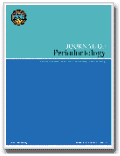
Letter to the Editor: Re: Decontamination of Anodized Implant Surface With Different Modalities for Peri-Implantitis Treatment: Lasers and Mechanical Debridement With Citric Acid.
J Periodontol. 2016 Sep;87(9):997. doi: 10.1902/jop.2016.160170..
Authors: Giannelli M1, Bani D2.

The effects of diode laser on Staphylococcus aureus biofilm and Escherichia coli lipopolysaccharide adherent to titanium oxide surface of dental implants. An in vitro study.
Lasers Med Sci. 2016 Jul 30.
Authors: Giannelli M1, Landini G2, Materassi F3, Chellini F4, Antonelli A2,5, Tani A4, Zecchi-Orlandini S4, Rossolini GM2,5,6, Bani D4.
Abstract: Effective decontamination of biofilm and bacterial toxins from the surface of dental implants is a yet unresolved issue. This in vitro study aims at providing the experimental basis for possible use of diode laser (λ 808 nm) in the treatment of peri-implantitis. Staphylococcus aureus biofilm was grown for 48 h on titanium discs with porous surface corresponding to the bone-implant interface and then irradiated with a diode laser (λ 808 nm) in noncontact mode with airflow cooling for 1 min using a Ø 600-μm fiber. Setting parameters were 2 W (400 J/cm2) for continuous wave mode; 22 μJ, 20 kHz, 7 μs (88 J/cm2) for pulsed wave mode. Bactericidal effect was evaluated using fluorescence microscopy and counting the residual colony-forming units. Biofilm and titanium surface morphology were analyzed by scanning electron microscopy (SEM). In parallel experiments, the titanium discs were coated with Escherichia coli lipopolysaccharide (LPS), laser-irradiated and seeded with RAW 264.7 macrophages to quantify LPS-driven inflammatory cell activation by measuring the enhanced generation of nitric oxide (NO). Diode laser irradiation in both continuous and pulsed modes induced a statistically significant reduction of viable bacteria and nitrite levels. These results indicate that in addition to its bactericidal effect laser irradiation can also inhibit LPS-induced macrophage activation and thus blunt the inflammatory response. The λ 808-nm diode laser emerges as a valuable tool for decontamination/detoxification of the titanium implant surface and may be used in the treatment of peri-implantitis.

Low intensity 635 nm diode laser irradiation inhibits fibroblast-myofibroblast transition reducing TRPC1 channel expression/activity: New perspectives for tissue fibrosis treatment.
Lasers Surg Med. 2016 Mar;48(3):318-32. doi: 10.1002/lsm.22441.
Authors: Sassoli C, Chellini F, Squecco R, Tani A, Idrizaj E, Nosi D, Giannelli M, Zecchi-Orlandini S.
Abstract:
BACKGROUND AND OBJECTIVE:
Low-level laser therapy (LLLT) or photobiomodulation therapy is emerging as a promising new therapeutic option for fibrosis in different damaged and/or diseased organs. However, the anti-fibrotic potential of this treatment needs to be elucidated and the cellular and molecular targets of the laser clarified. Here, we investigated the effects of a low intensity 635 ± 5 nm diode laser irradiation on fibroblast-myofibroblast transition, a key event in the onset of fibrosis, and elucidated some of the underlying molecular mechanisms.
MATERIALS AND METHODS:
NIH/3T3 fibroblasts were cultured in a low serum medium in the presence of transforming growth factor (TGF)-β1 and irradiated with a 635 ± 5 nm diode laser (continuous wave, 89 mW, 0.3 J/cm(2) ). Fibroblast-myofibroblast differentiation was assayed by morphological, biochemical, and electrophysiological approaches. Expression of matrix metalloproteinase (MMP)-2 and MMP-9 and of Tissue inhibitor of MMPs, namely TIMP-1 and TIMP-2, after laser exposure was also evaluated by confocal immunofluorescence analyses. Moreover, the effect of the diode laser on transient receptor potential canonical channel (TRPC) 1/stretch-activated channel (SAC) expression and activity and on TGF-β1/Smad3 signaling was investigated.
RESULTS:
Diode laser treatment inhibited TGF-β1-induced fibroblast-myofibroblast transition as judged by reduction of stress fibers formation, α-smooth muscle actin (sma) and type-1 collagen expression and by changes in electrophysiological properties such as resting membrane potential, cell capacitance and inwardly rectifying K(+) currents. In addition, the irradiation up-regulated the expression of MMP-2 and MMP-9 and downregulated that of TIMP-1 and TIMP-2 in TGF-β1-treated cells. This laser effect was shown to involve TRPC1/SAC channel functionality. Finally, diode laser stimulation and TRPC1 functionality negatively affected fibroblast-myofibroblast transition by interfering with TGF-β1 signaling, namely reducing the expression of Smad3, the TGF-β1 downstream signaling molecule.
CONCLUSION:
Low intensity irradiation with 635 ± 5 nm diode laser inhibited TGF-β1/Smad3-mediated fibroblast-myofibroblast transition and this effect involved the modulation of TRPC1 ion channels. These data contribute to support the potential anti-fibrotic effect of LLLT and may offer further informations for considering this therapy as a promising therapeutic tool for the treatment of tissue fibrosis.
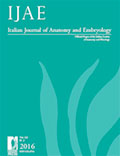
Diode laser stimulation prevents Fibroblast- Myofibroblast transition reducing TRPC1 expression: new perspectives for tissue fibrosis treatment.
(2015). Italian Journal Of Anatomy And Embryology, 119(1), 44. doi:10.13128/IJAE-15874Abstract
Authors: Chellini, F., Sassoli, C., Tani, A., Nosi, D., Squecco, R., Giannelli, M., & Zecchi Orlandini, S.
Abstract: Fibrosis consists in a excessive and persistent formation of fibrous connective tissue that occurs frequently in different organs or tissues after an injury. The cells principally involved in the onset and progression of fibrosis, are the activated form of the fibroblasts, namely myofibroblasts. Although required for the wound healing and the reparative response to organ/tissue damage, myofibroblast persistence contributes to the increased synthesis and deposition of extracellular matrix proteins, which replace the necrotic or damaged tissue with a scar. In such perspective, identification of treatments capable of preventing myofibroblast generation and defining their molecular targets appears a key step for the design of therapeutic strategies aimed at counteracting fibrosis. On these bases, in the present study, by a morphological, biochemical and electrophysiological approach, we evaluated the effects of a diode laser treatment (635 nm) on the differentiation of NIH3T3 fibroblasts into myofibroblasts. We found that the laser stimulation was able to inhibit TGF-β1-induced fibroblast-myofibroblast transition and modify the myofibroblast resting membrane potential and inwardly rectifying K+ currents. We also found that the treatment up-regulated metalloprotease (MMP)-2 and -9 expression and downregulated the tissue inhibitors of metalloproteinases (TIMP)1 and -2 in TGF-β1-treated cells. Interestingly, the effects of the laser on fibroblasts involved the Transient Receptor Potential Channel 1 (TRPC-1) functionality. In conclusion, the present study besides offering novel experimental evidence on the mechanisms of

Thermal effects of λ=808 nm GaAlAs diode laser irradiation on different titanium surfaces
Lasers Med Sci. 2015 Sep 30. [Epub ahead of print]
Authors: Giannelli M1, Lasagni M2, Bani D3.
Abstract: Diode lasers are widely used in dental laser treatment, but little is known about their thermal effects on different titanium implant surfaces. This is a key issue because already a 10 °C increase over the normal body temperature can induce bone injury and compromise osseo-integration. The present study aimed at evaluating the temperature changes and surface alterations experienced by different titanium surfaces upon irradiation with a λ = 808 nm diode laser with different settings and modalities. Titanium discs with surfaces mimicking different dental implant surfaces including TiUnite and anodized, machined surfaces were laser-irradiated in contact and non-contact mode, and with and without airflow cooling. Settings were 0.5-2.0 W for the continuous wave mode and 10-45 μJ, 20 kHz, 5-20 μs for the pulsed wave mode. The results show that the surface characteristics have a marked influence on temperature changes in response to irradiation. The TiUnite surface, corresponding to the osseous interface of dental implants, was the most susceptible to thermal rise, while the machined surfaces, corresponding to the implant collar, were less affected. In non-contact mode and upon continuous wave emission, the temperature rose above the 50 °C tissue damage threshold. Scanning electron microscopy investigation of surface alterations revealed that laser treatment in contact mode resulted in surface scratches even when no irradiation was performed. These findings indicate that the effects of diode laser irradiation on implant surfaces depend on physical features of the titanium coating and that in order to avoid thermal or physical damage to implant surface the irradiation treatment has to be carefully selected.
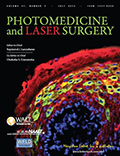
Efficacy of Combined Photoablative-Photodynamic Diode Laser Therapy Adjunctive to Scaling and Root Planing in Periodontitis: Randomized Split-Mouth Trial with 4-Year Follow-Up
Photomed Laser Surg. 2015 Sep;33(9):473-80
Authors: Giannelli M1, Formigli L2, Lorenzini L1, Bani D3.
Abstract:
Objective:We previously showed that photoablative laser therapy followed by multiple photodynamic cycles (PAPD) after scaling/root planing (SRP) improved healing of periodontitis patients as compared with conventional SRP after 1-year follow-up. This study reports the favorable results of PAPD plus SRP in patients with chronic periodontitis at a 4-year follow-up.
Materials and methods: Twenty-four patients were studied. Maxillary left or right quadrants were randomly assigned to PAPD laser treatment or sham-treatment and SRP. PAPD consisted of: (1) photoablative intra/extrapocket de-epithelization with diode laser (λ 810 nm, 1 W), and (2) photodynamic treatments (4-10 weekly) with diode laser (λ 635 nm, 100 mW) and 0.3% methylene blue as photoactive antiseptic, performed after SRP. Sham treatment was performed with switched- off laser. Probing depth (PD), clinical attachment level (CAL), and bleeding-on-probing (BOP) were evaluated. Additional disease markers, namely polymorphonuclear leukocytes (PMN), erythrocytes (RBC), damaged epithelial cells (DEC), and bacteria were assayed by cytofluorescence on gingival exfoliative samples.
Results: At 4-year follow-up, PAPD plus SRP significantly improved PD, CAL, and BOP, as well as bacterial contamination and PMN-RBC shedding in the exfoliative samples, compared with sham treatment plus SRP. This effect was greater than that observed at 1-year follow-up.
Conclusions: PAPD plus SRP provided significant, durable improvement of chronic periodontitis over sham treatment plus SRP alone.

Comparative Evaluation of Photoablative Efficacy of Er:YAG and Diode Laser for the Treatment of Gingival Hyperpigmentation. A Randomized Split-Mouth Clinical Trial.
J Periodontol. 2013 Jul 4. [Epub ahead of print]
Authors: Giannelli M, Formigli L, Bani D.
Source: Odontostomatologic Laser Therapy Center, Florence, Italy.
Abstract: Background: The use of lasers in periodontology is a matter of debate, mainly due to the lack of consensual therapeutic protocols. In this randomized split-mouth trial we have compared the clinical efficacy of 2 different photoablative dental lasers, Er:YAG and diode, for the treatment of gingival hyper-pigmentation. Methods: Twenty-one patients requiring treatment for mild to severe gingival hyper-pigmentation were enrolled. Maxillary or mandibular left or right quadrants were randomly subjected to photoablative de-epithelization with either Er:YAG or diode laser. Blinded clinical assessments of each laser quadrant were made at admission and day 7-30-180 post-operatively by an independent observer. Histological examination was performed prior, and soon after treatment, and 6 months post-irradiation. Patients also compiled a subjective evaluation questionnaire. Results: Both diode and Er:YAG lasers gave excellent results in gingival hyper-pigmentation. However, Er:YAG laser induced deeper gingival tissue injury than diode laser, as judged by bleeding at surgery, delayed healing and histopathological analysis. The use of diode laser showed additional advantages over Er:YAG in terms of less postoperative discomfort and pain. Conclusions: This study highlights the efficacy of diode laser for photoablative de-epithelization of hyper-pigmented gingiva. We suggest that this laser can represent an effective and safe therapeutic option for gingival photoablation.

A new thermographic and fluorescent method for tuning photoablative laser removal of the gingival epithelium in patients with chronic periodontitis and hyperpigmentation.
Photomed Laser Surg. 2013 May;31(5):212-8. doi: 10.1089/pho.2012.3457. Epub 2013 Apr 18.
Authors: Giannelli M, Formigli L, Lasagni M, Bani D.
Source: Odontostomatologic Laser Therapy Center, Florence, Italy.
Abstract:
Objective:The purpose of this study was to optimize gingival laser photoablation by thermographic and autofluorescent feedbacks. Background data: Photoablative laser treatment is commonly used for gingival de-epithelization in patients with chronic periodontitis or hyperpigmentation. The reduction of collateral thermal damage of periodontal tissues is crucial for optimal treatment outcome.
Methods: Nineteen patients with chronic periodontitis, seven of whom showing gingival hyperpigmentation, were subjected to de-epithelization with an 810 nm diode laser used in continuous (1 W, 66.67 J/cm2) or pulsed wave mode (69 μJ, 18 μs, 8000 Hz, corresponding to peak/mean power of 3.8 W/0.6 W, 40 J/cm2), depending upon individual gingival features. Photoablation was controlled in real time with a 405 nm violet light probe, which stimulated a yellow autofluorescence of the laser-coagulated tissue. The temperature at the target tissue was controlled with an infrared thermographic probe. When appropriate, small biopsies were taken to evaluate epithelial ablation and thermal effects.
Results: The energy density transferred to the treated tissue surface was computed based on the irradiation modality of the target tissues. Laser photoablation performed under thermographic control yielded complete removal of the gingival epithelium with minimal injury to the underlying lamina propria. Irradiation-evoked autofluorescence, conceivably the result of epithelial keratins, allowed very sharp recognition of the borders between laser-ablated and intact epithelium, thus preventing repeated irradiation.
Conclusions: This study further supports the favorable characteristics of photoablative diode laser for gingival de-epithelization. Concurrent thermographic and fluorescent analysis can provide substantial help to the setup of a safe and well-tolerated protocol.
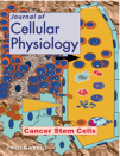
Photoactivation of bone marrow mesenchymal stromal cells with diode laser: effects and mechanisms of action.
J Cell Physiol. 2013 Jan;228(1):172-81. doi: 10.1002/jcp.24119.
Authors: Giannelli M, Chellini F, Sassoli C, Francini F, Pini A, Squecco R, Nosi D, Bani D, Zecchi-Orlandini S, Formigli L.
Source: Odontostomatologic Laser Therapy Center, Florence, Italy.
Abstract: Mesenchymal stromal cells (MSCs) are a promising cell candidate in tissue engineering and regenerative medicine. Their proliferative potential can be increased by low-level laser irradiation (LLLI), but the mechanisms involved remain to be clarified. With the aim of expanding the therapeutic application of LLLI to MSC therapy, in the present study we investigated the effects of 635 nm diode laser on mouse MSC proliferation and investigated the underlying cellular and molecular mechanisms, focusing the attention on the effects of laser irradiation on Notch-1 signal activation and membrane ion channel modulation. It was found that MSC proliferation was significantly enhanced after laser irradiation, as judged by time lapse videomicroscopy and EdU incorporation. This phenomenon was associated with the up-regulation and activation of Notch-1 pathway, and with increased membrane conductance through voltage-gated K(+) , BK and Kir, channels and T- and L-type Ca(2+) channels. We also showed that MSC proliferation was mainly dependent on Kir channel activity, on the basis that the cell growth and Notch-1 up-regulation were severely decreased by the pre-treatment with the channel inhibitor Ba(2+) (0.5 mM). Interestingly, the channel inhibition was also able to attenuate the stimulatory effects of diode laser on MSCs, thus providing novel evidence to expand our knowledge on the mechanisms of biostimulation after LLLI. In conclusions, our findings suggest that diode laser may be a valid approach for the preconditioning of MSCs in vitro prior cell transplantation.
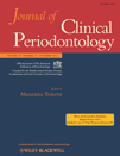
Combined photoablative and photodynamic diode laser therapy as an adjunct to non-surgical periodontal treatment: a randomized split-mouth clinical trial.
J Clin Periodontol. 2012 Oct;39(10):962-70. doi: 10.1111/j.1600-051X.2012.01925.x. Epub 2012 Jul 27.
Authors: Giannelli M, Formigli L, Lorenzini L, Bani D.
Source: Odontostomatologic Laser Therapy Center, Florence, Italy.
Abstract:
Aim: Comparing the efficacy of photoablative and photodynamic diode laser in adjunct to scaling -root planing (SRP) and SRP alone for the treatment of chronic periodontitis.
Materials and methods: Twenty-six patients were studied. Maxillary left or right quadrants were randomly assigned to sham-laser treatment + SRP or laser + SRP. This consisted of photoablative intra/extra-pocket de-epithelization with diode laser (λ = 810 nm), followed by single SRP and multiple photodynamic treatments (once weekly, 4-10 applications, mean ± SD: 3.7 ± 2.4) using diode laser (λ = 635 nm) and 0.3% methylene blue as photosensitizer. The patients were monitored at days 0 and 365 by clinical assessment (probing depth, PD; clinical attachment level, CAL; bleeding on probing, BOP) and at days 0, 15, 30, 45, 60, 75, 90, 365 by cytofluorescence analysis of gingival exfoliative samples taken in proximity of the teeth to be treated (polymorphonuclear leukocytes, PMN; red blood cells, RBC; damaged epithelial cells, DEC; bacteria).
Results: At day 365, compared with the control quadrants, the laser + SRP therapy yielded a significant (p
Conclusions: Diode laser treatment (photoablation followed by multiple photodynamic cycles) adjunctive to conventional SRP improves healing in chronic periodontitis patients.

Comparative in vitro study among the effects of different laser and LED irradiation protocols and conventional chlorhexidine treatment for deactivation of bacterial lipopolysaccharide adherent to titanium surface.
Photomed Laser Surg. 2011 Aug;29(8):573-80. doi: 10.1089/pho.2010.2958. Epub 2011 Mar 27.
Authors: Giannelli M, Pini A, Formigli L, Bani D.
Source: Odontostomatologic Laser Therapy Center, Florence, Italy.
Abstract:
Objective and background: The present in vitro study was designed to evaluate and compare the efficacy of: 1) different dental laser devices used in photoablative (PA) mode, namely commercial CO(2), Er:YAG, and Nd:YAG lasers and a prototype diode laser (wavelength = 810 nm); 2) prototype low-energy laser diode or light-emitting diode (LED) (wavelength = 630 nm), used in photodynamic (PD) mode together with the photoactivated agent methylene blue; and 3) chlorhexidine, used as reference drug, to reduce the activation of macrophages by lipopolysaccharide (LPS), a major pro-inflammatory gram-negative bacterial endotoxin, adherent to titanium surface.
Methods: RAW 264-7 macrophages were cultured on titanium discs, cut from commercial dental implants and precoated with Porphyromonas gingivalis LPS. Before cell seeding, the discs were treated or not with the noted lasers and LED in PA and PD modes, or with chlorhexidine. The release of nitric oxide (NO), assumed to be a marker of macrophage inflammatory activation, in the conditioned medium was related to cell viability, evaluated by the MTS assay and ultrastructural analysis.
Results: PA laser irradiation of the LPS-coated discs with Er:YAG, Nd:YAG, CO(2,) and diode (810 nm) significantly reduced NO production, with a maximal inhibition achieved by Nd:YAG and diode (810 nm). Similar effects were also obtained by PD treatment with diode laser and LED (630 nm) and methylene blue. Notably, both treatments were superior to chlorhexidine in terms of efficiency/toxicity ratio.
Conclusions: These findings suggest that laser and LED irradiation are capable of effectively reducing the inflammatory response to LPS adherent to titanium surface, a notion that may have clinical relevance.de-epithelization. Concurrent thermographic and fluorescent analysis can provide substantial help to the setup of a safe and well-tolerated protocol.
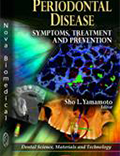
A Novel Cytodiagnostic Fluorescence Assay for the Diagnosis of Periodontitis pp. 137-151- 2011
Authors: Marco Giannelli, Lucia Formigli, Daniele Bani, Odontostomatologic Laser Therapy Center, University of Florence, Florence, Italy, and others
Abstract: A topical issue in periodontology is to find objective diagnostic methods which may be combined with the classical clinical inspection parameters to yield a reliable grading of the severity and extent of periodontal disease. This study deals with a novel cytodiagnostic fluorescence test, performed on exfoliation samples taken from periodontal/oral tissues, useful to assess the severity of periodontal disease. Twenty-one patients with different degrees of periodontitis were subjected to clinical and histopathological grading and the results compared with those obtained from the cytodiagnostic fluorescence assay. We found that the amount of blood cells (polymorphonuclear and mononuclear leukocytes, erythrocytes), the occurrence of morphologically abnormal epithelial cells, and the number of spirochetes showed a statistically significant correlation with the clinical and histopathological diagnostic parameters, the latter being considered as the most reliable predictors of the severity of periodontal disease. On these grounds, we suggest that this cytodiagnostic method may greatly help dental practitioners to achieve a chair-side, reliable and objective evaluation of the degree and activity of periodontitis at first dental visit, and to perform a targeted treatment and an accurate follow up of the patients during supportive periodontal therapy.
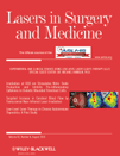
Low pulse energy Nd:YAG laser irradiation exerts a biostimulative effect on different cells of the oral microenvironment: “an in vitro study”.
Lasers Surg Med. 2010 Aug;42(6):527-39. doi: 10.1002/lsm.20861.
Authors: Chellini F, Sassoli C, Nosi D, Deledda C, Tonelli P, Zecchi-Orlandini S, Formigli L, Giannelli M.
Source: Department of .Anatomy, Histology and Forensic Medicine, University of Florence, Florence, Italy. f _ chellini@hotmail.com
Abstract:
Background and objective: Dental lasers represent a promising therapeutic tool in the treatment of periodontal and peri-implant diseases. However, their clinical application remains still limited. Here, we investigated the potential biostimulatory effect of low pulse energy neodymium:yttrium-aluminum-garnet (Nd:YAG) laser irradiation on different cells representative of the oral microenvironment and elucidated the underlying molecular mechanisms.
Materials and methods: Saos-2 osteoblasts, H-end endothelial cells, and NIH/3T3 fibroblasts pre-treated or not with photosensitizing dye methylene blue (MB), were irradiated with low pulse energy (20 mJ) and high repetition rate (50-70 Hz) Nd:YAG laser, and evaluated for cell viability and proliferation as well as for the expression of specific differentiation markers by confocal immunofluorescence and real-time RT-PCR. Changes in intracellular Ca(2+) levels after laser exposure were also evaluated in living osteoblasts.
Results: Nd:YAG laser irradiation did not affect cell viability in all the tested cell types, even when combined with pre-treatment with MB, and efficiently stimulated cell growth in the non-sensitized osteoblasts. Moreover, a significant induction in the expression of osteopontin, ALP, and Runx2 in osteoblasts, type I collagen in fibroblasts, and vinculin in endothelial cells could be observed in the irradiated cells. Pre-treatment with MB negatively affected cell differentiation in the unstimulated and laser-stimulated cells. Notably, laser irradiation also caused an increase in the intracellular Ca(2+) in osteoblasts through the activation of TRPC1 ion channels. Moreover, the pharmacologic or genetic inhibition of these channels strongly attenuated laser-induced osteopontin expression, suggesting a role for the laser-mediated Ca(2+) influx in regulating osteoblast differentiation.
Conclusions: Low pulse energy and high repetition rate Nd:YAG laser irradiation may exert a biostimulative effect on different cells representative of the oral microenvironment, particularly osteoblasts. Pre-treatment with MB prior to irradiation hampers this effect and limits the potential clinical application of photosensitizing dyes in dental practice.

In vitro evaluation of the effects of low-intensity Nd:YAG laser irradiation on the inflammatory reaction elicited by bacterial lipopolysaccharide adherent to titanium dental implants.
J Periodontol. 2009 Jun;80(6):977-84. doi: 10.1902/jop.2009.080648.
Authors: Giannelli M, Bani D, Tani A, Pini A, Margheri M, Zecchi-Orlandini S, Tonelli P, Formigli L.
Source: Department of Odontostomatology, University of Florence, Florence, Italy.
Abstract:
Background: The bacterial endotoxin lipopolysaccharide (LPS) represents a prime pathogenic factor of peri-implantitis because of its ability to adhere tenaciously to dental titanium implants. Despite this, the current therapeutic approach to this disease remains based mainly on bacterial decontamination, paying little attention to the neutralization of bioactive bacterial products. The purpose of the present study was to evaluate whether irradiation with low-energy neodymium-doped:yttrium, aluminum, and garnet (Nd:YAG) laser, in addition to the effects on bacterial implant decontamination, was capable of attenuating the LPS-induced inflammatory response.
Methods: RAW 264.7 macrophages or human umbilical vein endothelial cells were cultured on titanium disks coated with Porphyromonas gingivalis LPS, subjected or not to irradiation with the Nd:YAG laser, and examined for the production of inflammatory cytokines and the expression of morphologic and molecular markers of cell activation.
Results: Laser irradiation of LPS-coated titanium disks significantly reduced LPS-induced nitric oxide production and cell activation by the macrophages and strongly attenuated intercellular adhesion molecule-1 and vascular cell adhesion molecule expression, as well as interleukin-8 production by the endothelial cells.
Conclusions: By blunting the LPS-induced inflammatory response, Nd:YAG laser irradiation may be viewed as a promising tool for the therapeutic management of peri-implantitis.
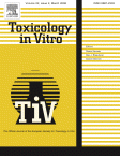
Effect of chlorhexidine digluconate on different cell types: a molecular and ultrastructural investigation.
Toxicol In Vitro. 2008 Mar;22(2):308-17. Epub 2007 Nov 5.
Authors: Giannelli M, Chellini F, Margheri M, Tonelli P, Tani A.
Source: Department of Oral Surgery, University of Florence, Viale Morgagni 85, 50134 Florence, Italy. dott.giannellimarco@dada.it
Abstract: Although several studies have shown that chlorhexidine digluconate (CHX) has bactericidal activity against periodontal pathogens and exerts toxic effects on periodontal tissues, few have been directed to evaluate the mechanisms underlying its adverse effects on these tissues. Therefore, the aim of the present study was to investigate the in vitro cytotoxicity of CHX on cells that could represent common targets for its action in the surgical procedures for the treatment of periodontitis and peri-implantitis and to elucidate its mechanisms of action. Osteoblastic, endothelial and fibroblastic cell lines were exposed to various concentrations of CHX for different times and assayed for cell viability and cell death. Also analysis of mitochondrial membrane potential, intracellular Ca2+ mobilization and reactive oxygen species (ROS) generation were done in parallel, to correlate CHX-induced cell damage with alterations in key parameters of cell homeostasis. CHX affected cell viability in a dose and time-dependent manners, particularly in osteoblasts. Its toxic effect consisted in the induction of apoptotic and autophagic/necrotic cell deaths and involved disturbance of mitochondrial function, intracellular Ca2+ increase and oxidative stress. These data suggest that CHX is highly cytotoxic in vitro and invite to a more cautioned use of the antiseptic in the oral surgical procedures.
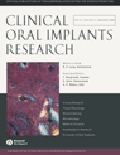
Neodymium:yttrium aluminum garnet laser irradiation with low pulse energy: a potential tool for the treatment of peri-implant disease.
Clin Oral Implants Res. 2006 Dec;17(6):638-43.
Authors: Giannini R, Vassalli M, Chellini F, Polidori L, Dei R, Giannelli M.
Source: Department of Anatomy, Histology and Forensic Medicine, University of Florence, Florence, Italy
Abstract: Bacterial contamination may seriously compromise successful implant osteointegration in the clinical practice of dental implantology. Several methods for eliminating bacteria from the infected implants have been proposed, but none of them have been shown to be an effective tool in the treatment of peri-implantitis. In the present study, we investigated the efficacy of pulsed neodymium:yttrium aluminum garnet laser irradiation (Nd:YAG) in achieving bacterial ablation while preserving the surface properties of titanium implants. For this purpose, suspensions of Escherichia coli or Actinobacillus (Haemophilus) actinomycetemcomitans were irradiated with different laser parameters, both streaked on titanium implants, and in broth medium. It was found, by light and atomic force microscopy, that Nd:YAG laser, when used with proper working parameters, was able to bring about a consistent microbial ablation of both aerobic and anaerobic species, without damaging the titanium surface.
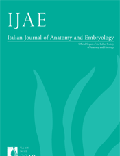
Effect of Nd: YAG laser on titanium dental implants studied by AFM.
Ital J Anat Embryol. 2003 Oct-Dec;108(4):195-203.
Authors: Vassalli M, Giannelli M.
Source: National Institute of Applied Optics, Largo E. Fermi 6, 50125 Firenze, Italy. massimo@inoa.it
Abstract: Bacterial contamination of dental implants is considered the main cause of implant failure. Recently, the laser treatment of the implant surface has been proposed as an useful method for decontamination. In such a view, the present study was conducted to investigate the effects of a Nd:YAG laser on the surface morphology of a titanium dental implant by means of an atomic force microscope. We demonstrated that, when the pulse energy of the laser was kept below 30 mJ, independently from the pulse rate, the laser-treated specimens exhibited a qualitatively similar surface morphology when compared to the untreated titanium implants, suggesting that the implant surface was unaffected by the treatment, in these particular conditions. We also found that, by cooling the implant surface with an air flow? during laser irradiation, the mean temperature of the implant was maintained under 37 degrees C. All these data taken together suggest the possibility to use Nd:YAG laser for the treatment of failing dental implants.

